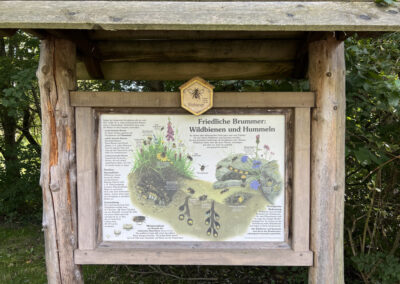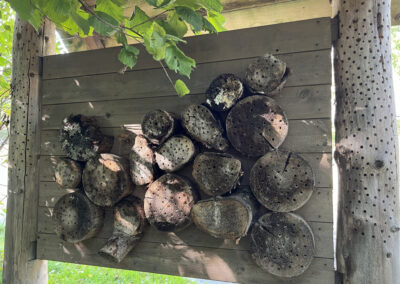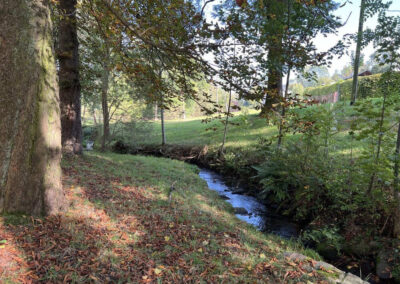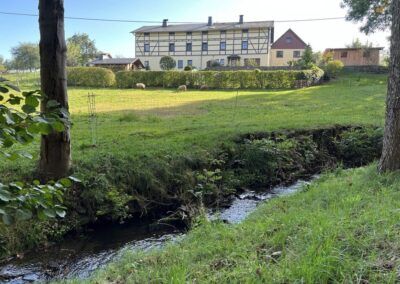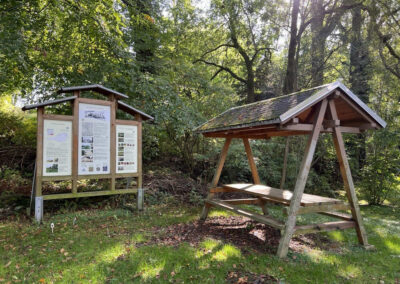Kirchbach
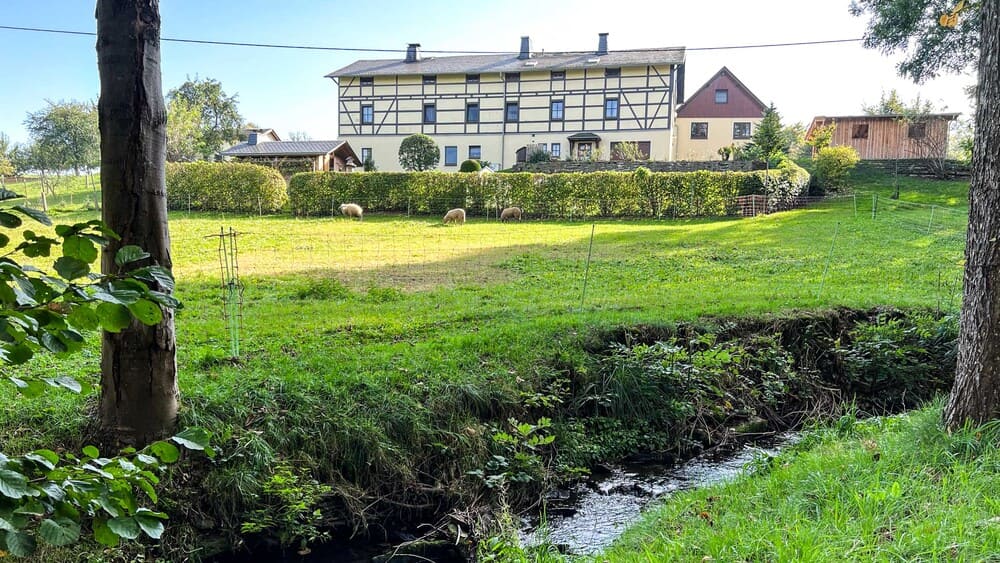
Basic info
Country:
Area:
Population:
Density:
Summary:
References:
https://www.laendlicher-raum.sachsen.de/download/Siedl-oekol_Dorfentw_Kirchbach.pdf
https://www.oederan.de/fileadmin/user_upload/stadt-buergerservice/Ortsrecht/Gestaltungssatzung_Kirchbach.pdf
https://de.wikipedia.org/wiki/Kirchbach_(Oederan)
http://www.entente-florale.de/content/international/kirchbach.php
https://akademielandpartie.de/2019/09/03/kirchbach-nachhaltig/
Keywords
Gallery
"New life in old structures."
Issues Addressed
In the early 1990s, the main goal of the Kirchbach municipality was to develop a future-oriented strategy for the village. The focus was on preserving the historical settlement structure of the Waldhufendorf (linear forest village) and enhancing its ecological value through targeted tree and shrub planting. Notable was the conscious decision against further settlement expansion, which underscores the sustainable nature of the concept.
Approaches and Solutions
The chosen approach was based on a participatory process, where a development concept was created early on with the village community. Implementation occurred through several interlocking measures. Central to this was the natural development of the village stream and its floodplain as the ecological lifeline of the locality. The flood zone, which remains free from construction except for a few houses from the 19th century, enables a naturally meandering stream course and creates a robust ecosystem. Biodiversity was significantly increased through targeted planting of over 500 woody plants, the establishment of traditional orchards, and the installation of wild bee nesting aids. The willows, wild roses, and hazel bushes planted along the village road as part of the “WeiRoHa Project” cleverly connected to historical precedents and particularly shapes the village’s appearance during flowering season.
Actors and Stakeholders
The village community of 230 residents formed the heart of the development. The measures were planned and implemented in close cooperation with the municipal administration. Private property owners played a special role by making their land available for implementing the measures. Agricultural businesses also contributed to the success through their cooperation.
Challenges and Opportunities
The greatest challenge lay in balancing development with nature conservation. Integrating various interests required continuous dialogue. The long-term implementation over more than twenty years demanded perseverance and consistent action. Through intensive cooperation among all participants and gradual realization on both public and private land, the challenges were successfully overcome.
Outcomes and Lessons Learnt
The development strategy led to the creation of a functioning ecosystem with twelve interconnected ponds. The natural development of the stream meadows significantly improved flood protection. The establishment of a fruit collection point revitalized private orchard management. Particularly valuable is the successful preservation of the historical character while achieving ecological enhancement. The central message lies in the successful implementation of a communally supported, sustainable development concept that harmoniously combines ecological, cultural, and economic aspects while preserving the village’s historical identity.
Selected major projects and awards
- Resolution of the local building regulations of the town of Oederan for the district of Kirchbach (design statutes, 1996)
- Award Regional Competition „Our village has got a future” (2009)
- Award National Competition „Our Village has got a future” (2010)
- Silver medal in Entente Florale Europe (2013)

